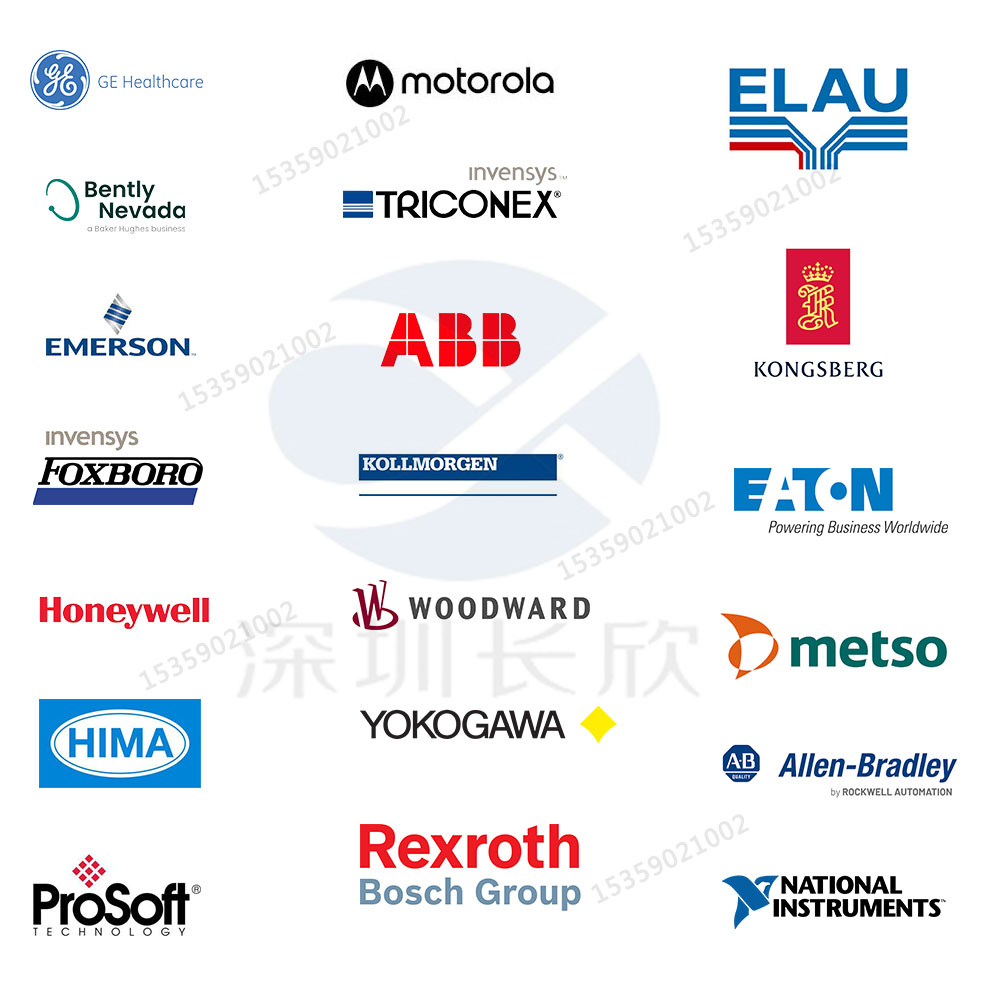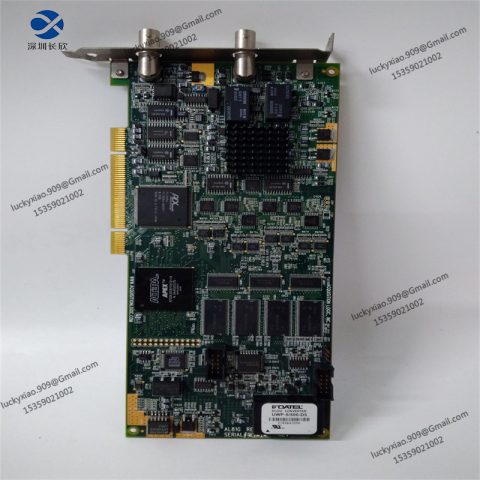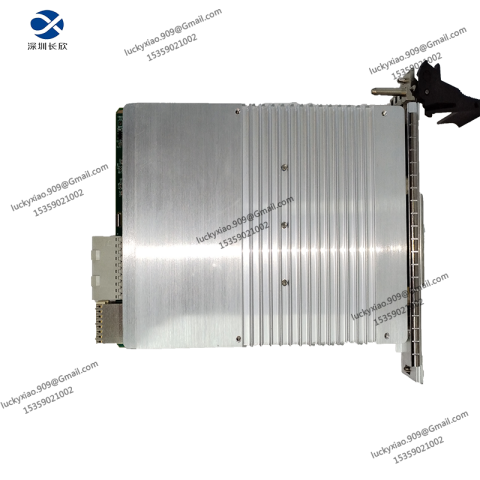Detailed Introduction to Inovance MS1H4-75B30CB-A334R
1. Product Description
The Inovance MS1H4-75B30CB-A334R is a high-torque, industrial-grade servo motor developed by Inovance Technology—a leading provider of automation solutions. Designed for precision motion control applications, this servo motor delivers stable, high-response performance, making it ideal for scenarios requiring accurate speed regulation, position control, and torque output.
As a core actuation component in industrial automation, the MS1H4-75B30CB-A334R excels in diverse industries:
- Packaging Machinery: Drives film winding, bottle capping, and labeling mechanisms, ensuring consistent speed and position accuracy to avoid packaging defects;
- CNC Machining: Powers feed axes and spindles in milling/lathe machines, enabling sub-millimeter positioning precision for complex part manufacturing;
- Robotics: Serves as joint actuators in collaborative robots (cobots) and industrial robots, providing smooth torque control for safe, precise movement;
- Textile Equipment: Controls yarn winding and fabric tension systems, maintaining uniform speed to prevent thread breakage or fabric distortion.
With its compact design, high power density, and robust thermal management, the MS1H4-75B30CB-A334R operates reliably in harsh industrial environments (e.g., high temperatures, mechanical vibration) and integrates seamlessly with Inovance servo drives (e.g., IS620, IS650 series) for a complete motion control solution.
2. Product Technical Specifications
The MS1H4-75B30CB-A334R’s specifications are optimized for industrial precision and durability. Key parameters are organized into clear categories below:
2.1 Core Performance Parameters
|
Parameter
|
Specification
|
|
Motor Type
|
Permanent Magnet Synchronous Servo Motor (PMSM)
|
|
Rated Power
|
7.5 kW (continuous operation)
|
|
Rated Torque
|
47.7 N·m
|
|
Peak Torque
|
143.2 N·m (150% of rated torque, 3-second duration)
|
|
Rated Speed
|
3,000 RPM
|
|
Maximum Speed
|
4,500 RPM (intermittent operation)
|
|
Rotor Inertia
|
0.018 kg·m²
|
|
Back EMF Constant
|
18.5 V/(krpm)
|
|
Torque Constant
|
1.51 N·m/A
|
|
Power Factor (PF)
|
≥0.95 (at rated load)
|
|
Efficiency
|
≥94% (at rated power and speed)
|
2.2 Electrical Specifications
|
Parameter
|
Specification
|
|
Rated Voltage
|
3-phase AC 380 V ±15%
|
|
Rated Current
|
15.2 A
|
|
Peak Current
|
45.6 A (3× rated current, 3-second duration)
|
|
Insulation Class
|
Class F (maximum allowable temperature: 155°C)
|
|
Insulation Resistance
|
≥100 MΩ (500V DC, between windings and frame)
|
|
Dielectric Strength
|
1,500V AC for 1 minute (no breakdown or leakage)
|
|
Cooling Method
|
Forced air cooling (integrated fan with IP54 protection)
|
2.3 Mechanical & Environmental Ratings
|
Parameter
|
Specification
|
|
Frame Size
|
180 mm (flange diameter: 180 mm)
|
|
Shaft Diameter
|
30 mm (tapered shaft; optional keyway for secure coupling)
|
|
Shaft Extension Length
|
80 mm
|
|
Bearing Type
|
Double-row deep groove ball bearings (lifespan ≥ 10,000 hours at rated speed)
|
|
Protection Level
|
IP65 (dust-tight, water-resistant; suitable for wet/dusty workshops)
|
|
Operating Temperature
|
-10°C to +40°C (ambient); ≤155°C (winding temperature)
|
|
Storage Temperature
|
-20°C to +60°C
|
|
Vibration Resistance
|
5–100 Hz, 10 m/s² (IEC 60068-2-6 standard)
|
|
Shock Resistance
|
300 m/s² (11ms duration; IEC 60068-2-27 standard)
|
|
Weight
|
38 kg
|
2.4 Feedback Device
|
Parameter
|
Specification
|
|
Encoder Type
|
23-bit absolute optical encoder (single-turn)
|
|
Resolution
|
8,388,608 pulses/revolution (after electronic multiplication)
|
|
Output Interface
|
EnDat 2.2 (high-speed, bidirectional communication with servo drive)
|
|
Fault Detection
|
Supports encoder signal loss, short-circuit, and temperature monitoring
|
3. Usage Instructions
Proper installation, wiring, and commissioning are essential to unlock the MS1H4-75B30CB-A334R’s full performance. Follow these steps for safe, effective operation:
3.1 Pre-Installation Preparation
- Compatibility Check:
-
- Ensure the motor matches the servo drive (e.g., Inovance IS650PT3R7I for 7.5 kW systems) in voltage, current, and communication protocol (EnDat 2.2).
-
- Verify the load requirements (torque, speed, inertia) do not exceed the motor’s rated specifications (e.g., avoid continuous operation above 3,000 RPM).
- Inspection:
-
- Visually check for physical damage (e.g., cracked housing, bent shaft, loose fan). Confirm the encoder connector is intact and free of debris.
-
- Check accessories: Ensure mounting bolts, shaft coupling, and encoder cable are included (supplied with Inovance servo kits).
- Environmental Prep:
-
- Install the motor in a well-ventilated area (minimum 10 cm clearance around the fan for cooling). Avoid direct exposure to water, oil, or corrosive chemicals (use a protective cover if needed).
3.2 Mechanical Installation
- Mounting:
-
- Use the 180 mm flange to secure the motor to the machine frame. Use M12 bolts (torque: 35 N·m) and ensure the mounting surface is flat (≤0.1 mm/m flatness) to prevent vibration.
-
- For horizontal installation: Ensure the shaft is aligned with the load (e.g., CNC axis, robot joint) using a laser alignment tool. Radial misalignment ≤0.1 mm and angular misalignment ≤0.1° to avoid bearing wear.
- Shaft Coupling:
-
- Use a flexible coupling (e.g., jaw-type or diaphragm-type) to connect the motor shaft to the load. Avoid rigid couplings (they transmit vibration and misalignment).
-
- Do not exceed the shaft’s radial load limit (200 N at the shaft end) or axial load limit (100 N).
3.3 Wiring Connection
The MS1H4-75B30CB-A334R requires three types of connections: power, encoder, and cooling fan. Follow the wiring diagram below (compatible with Inovance IS650 drives):
3.3.1 Power Wiring (3-Phase AC)
|
Motor Terminal
|
Description
|
Drive Connection
|
Wire Specification
|
|
U
|
3-Phase AC Input (Phase 1)
|
U
|
4 mm² copper cable (600V)
|
|
V
|
3-Phase AC Input (Phase 2)
|
V
|
4 mm² copper cable (600V)
|
|
W
|
3-Phase AC Input (Phase 3)
|
W
|
4 mm² copper cable (600V)
|
|
PE
|
Protective Earth
|
PE
|
2.5 mm² copper cable
|
3.3.2 Encoder Wiring (EnDat 2.2)
|
Encoder Pin
|
Signal Name
|
Description
|
Drive Connection
|
Wire Type
|
|
1
|
+5V
|
Encoder Power Supply
|
+5V
|
Twisted-pair shielded cable (24 AWG)
|
|
2
|
GND
|
Encoder Ground
|
GND
|
Twisted-pair shielded cable (24 AWG)
|
|
3
|
DATA+
|
EnDat Data (Positive)
|
DATA+
|
Twisted-pair shielded cable (24 AWG)
|
|
4
|
DATA-
|
EnDat Data (Negative)
|
DATA-
|
Twisted-pair shielded cable (24 AWG)
|
|
5
|
CLK+
|
EnDat Clock (Positive)
|
CLK+
|
Twisted-pair shielded cable (24 AWG)
|
|
6
|
CLK-
|
EnDat Clock (Negative)
|
CLK-
|
Twisted-pair shielded cable (24 AWG)
|
|
7
|
SHLD
|
Encoder Cable Shield
|
Drive Chassis Ground
|
Connect to drive only (avoid ground loops)
|
3.3.3 Cooling Fan Wiring
|
Fan Terminal
|
Description
|
Drive Connection
|
Wire Specification
|
|
L
|
Fan Power Input (AC 220V)
|
L (Control Power)
|
0.75 mm² copper cable
|
|
N
|
Fan Neutral
|
N (Control Power)
|
0.75 mm² copper cable
|
Wiring Notes:
- Tighten terminal screws to 1.5–2.0 N·m to prevent loose connections (overheating risk).
- Keep power cables and encoder cables at least 30 cm apart to reduce electromagnetic interference (EMI).
- Use cable glands for IP65 protection when wiring exits the motor housing.
3.4 Commissioning & Testing
- Power-Up Check:
-
- Turn on the drive’s control power (AC 220V) first. The fan should start spinning, and the encoder should communicate with the drive (no “encoder fault” alarms on the drive display).
-
- Turn on the main power (AC 380V). The motor should remain stationary (no unintended rotation).
- Parameter Configuration:
-
- Use the drive’s keypad or Inovance’s “InoPro” software to load the motor’s default parameters (Inovance provides a parameter list for MS1H4 series motors).
-
- Set key parameters: Rated torque (P1-02 = 47.7 N·m), rated speed (P1-03 = 3000 RPM), and encoder resolution (P2-01 = 23 bits).
- Functional Testing:
-
- Jog Test: Use the drive’s jog function to rotate the motor at 500 RPM (clockwise and counterclockwise). Check for smooth operation (no noise or vibration).
-
- Position Control Test: Send a position command (e.g., 1000 pulses) via the drive. The motor should move to the target position and stop (verify with a laser position sensor).
-
- Torque Test: Apply a load (e.g., via a torque wrench) and monitor the drive’s torque feedback. The motor should maintain rated torque without overheating.
3.5 Routine Maintenance
- Monthly Inspection:
-
- Clean the fan and air vents with compressed air (0.3 MPa) to remove dust (blocked vents cause overheating).
-
- Check for loose mounting bolts or shaft play (use a dial indicator to measure radial runout ≤0.05 mm).
- Quarterly Maintenance:
-
- Measure winding resistance (U-V, V-W, W-U should be equal ±5%; typical value: 0.8 Ω for MS1H4-75B30CB-A334R).
-
- Inspect the encoder cable for damage (replace if insulation is cracked).
- Annual Service:
-
- Check bearing lubrication (replace bearings every 20,000 hours if operating in high-vibration environments).
-
- Verify IP65 sealing (replace O-rings if water ingress is detected).
4. System Introduction
The Inovance MS1H4-75B30CB-A334R is the “actuation heart” of a closed-loop motion control system, working with drives, controllers, and feedback devices to deliver precise motion. Below is its role in a typical industrial system:
4.1 System Architecture
A complete motion control system with the MS1H4-75B30CB-A334R includes four layers:
- Control Layer:
-
- A master controller (e.g., PLC, CNC, or motion controller like Inovance H3U) sends motion commands (speed, position, torque) to the servo drive. For example, a CNC controller sends a “move X-axis 100 mm at 2000 RPM” command.
- Drive Layer:
-
- The servo drive (e.g., Inovance IS650PT7R5I) processes the controller’s command and adjusts the motor’s power input (voltage/current). It uses the encoder’s feedback to correct errors (closed-loop control).
- Actuation Layer:
-
- The MS1H4-75B30CB-A334R converts electrical energy into mechanical motion. The permanent magnet rotor rotates synchronously with the stator’s magnetic field, delivering torque to the load (e.g., CNC axis, robot joint).
- Feedback Layer:
-
- The 23-bit absolute encoder continuously sends position and speed data to the drive. The drive compares the actual position/speed with the controller’s command and adjusts the motor’s output to minimize error (typical position error ≤0.01 mm).
4.2 System Advantages
- High Precision: 23-bit encoder and closed-loop control enable sub-millimeter position accuracy—critical for CNC machining and robotics.
- Fast Response: The motor’s low rotor inertia (0.018 kg·m²) and high torque constant (1.51 N·m/A) ensure rapid acceleration/deceleration (0–3000 RPM in 0.5 seconds).
- Reliability: IP65 protection and Class F insulation make the system suitable for harsh environments (e.g., food processing, automotive assembly lines).
- Cost-Effectiveness: Inovance’s integrated solution (motor + drive) reduces compatibility issues and lowers total cost of ownership (TCO) compared to mixed-brand systems.
4.3 Typical Application Example: CNC Lathe
In a CNC lathe, the MS1H4-75B30CB-A334R powers the main spindle:
- The CNC controller (e.g., Fanuc 0i-TF) sends a “spindle speed = 2000 RPM, cutting torque = 30 N·m” command to the Inovance IS650 drive.
- The drive adjusts the motor’s current to deliver 30 N·m of torque, spinning the spindle at 2000 RPM.
- The encoder feeds real-time speed data to the drive. If the load increases (e.g., cutting a hard metal), the drive increases current to maintain speed (torque compensation).
- After machining, the controller sends a “stop” command. The drive decelerates the motor to a stop (using regenerative braking to save energy).
Conclusion
The Inovance MS1H4-75B30CB-A334R servo motor combines high torque, precision, and durability to meet the demands of industrial automation. Its seamless integration with Inovance drives and controllers makes it a top choice for applications like CNC machining, robotics, and packaging. By following proper installation, commissioning, and maintenance procedures, users can ensure long-term reliability and maximize the motor’s performance—reducing downtime and improving production efficiency.






-480x480.jpg)




There are no reviews yet.